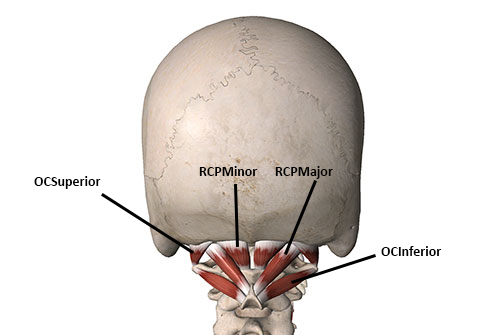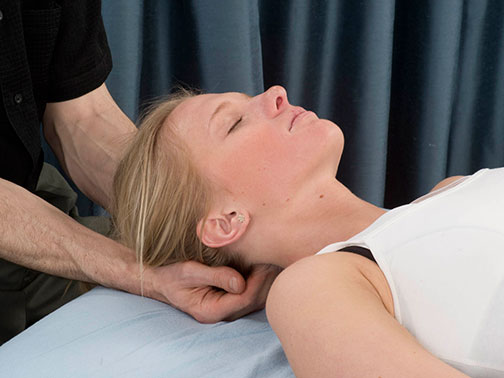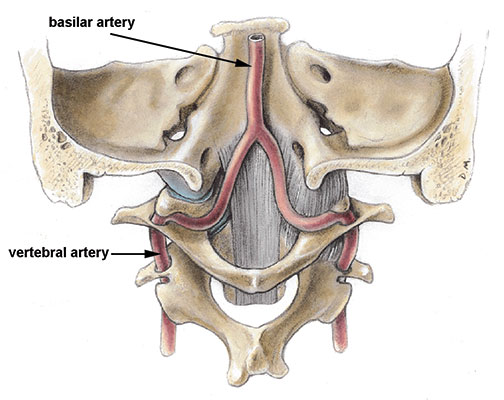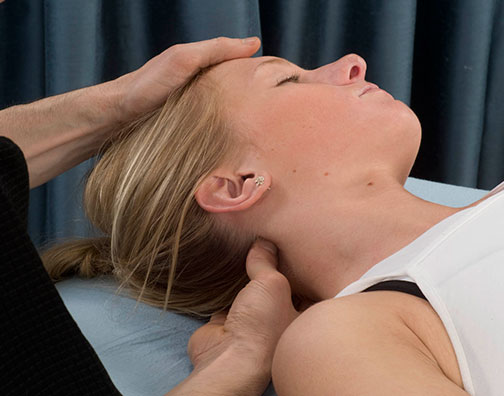Safely Working the Suboccipital Muscles
- Whitney Lowe
Numerous muscles in the cervical region can play a role in chronic neck or headache pain. These muscles are under regular postural strain from daily activities like forward head posture resulting from work at a computer. These muscles may also be injured from traumatic accidents like the whiplash following a car accident.
One of the key muscle groups controlling motion at the junction between the cervical spine and the head is the suboccipital muscle group. This group is composed of four short muscles on each side. These four muscles are the rectus capitis posterior minor, rectus capitis posterior major, obliquus capitis superior, and obliquus capitis inferior.

While they are very small, trigger points and hypertonicity in these muscles have frequently been associated with numerous neck and head pain complaints. In addition, there is a fascial connection between the rectus capitis posterior minor and the dura mater. Adverse tension in the rectus capitis posterior minor could therefore be tugging on this fascial connection and transmit tensile forces to the dura mater, a richly innervated neurological tissue
These muscles are deep and relatively difficult to access as they lie underneath the other posterior cervical muscles like the upper trapezius and semispinalis capitis. Because they are so short, it is difficult to apply long gliding strokes on these muscles and therefore most treatment techniques focus on static compression with very little movement.
One of the most common ways to treat this muscle group is through fingertip compression at the base of the occiput right where the muscles span the atlanto-occipital joint. This technique is most commonly performed with both hands applying pressure up into the suboccipital region as the client’s head rests on the fingertips. It is effective for releasing tension in these muscles, but there are some precautions to consider when applying this technique.

In addition to the muscles in this region the vertebral arteries run up each side of the spine and enter the cranium where they join together to form basilar artery.

Because each individual’s anatomy can be slightly different, pressure in this suboccipital region can sometimes clamp the vertebral arteries and occlude blood flow causing a decrease in blood flow to the brain. This is a condition called vertebrobasilar insufficiency. As you can imagine, decreasing blood flow to the brain is not a desirable treatment outcome even if it helps reduce muscle tightness!
One way to avoid having adverse complications of pressure in the suboccipital region is to apply pressure to these muscles on one side at a time.

That way if there is any adverse blockage of arterial circulation, the blood flow is still moving freely on the side opposite the one being treated. While it is not common to cause adverse reactions from pressure in this area, when it does occur it can be quite distressing to the client so it is good to be aware of this potential complication. Treating one side at a time with a variety of different techniques is a good alternative.

